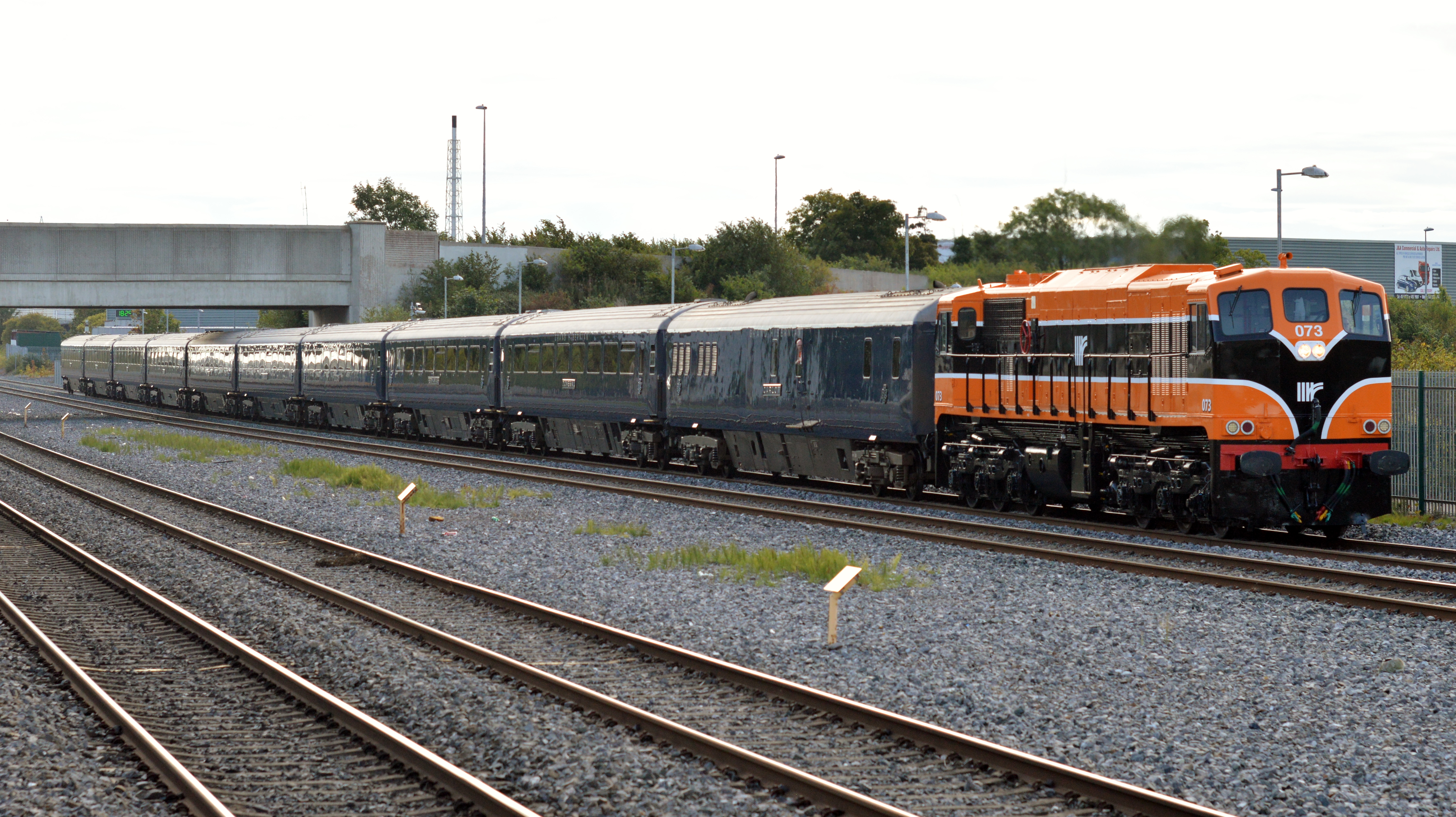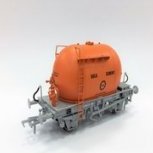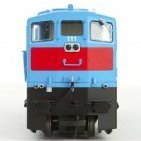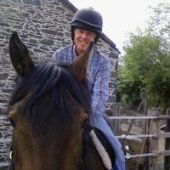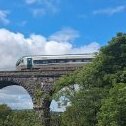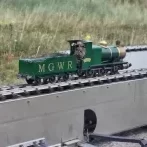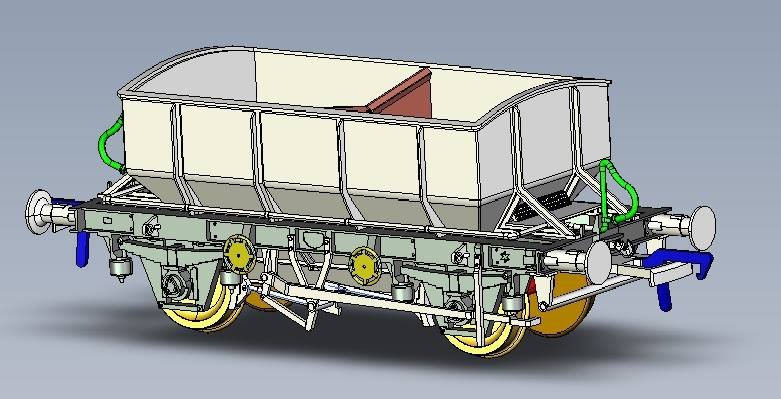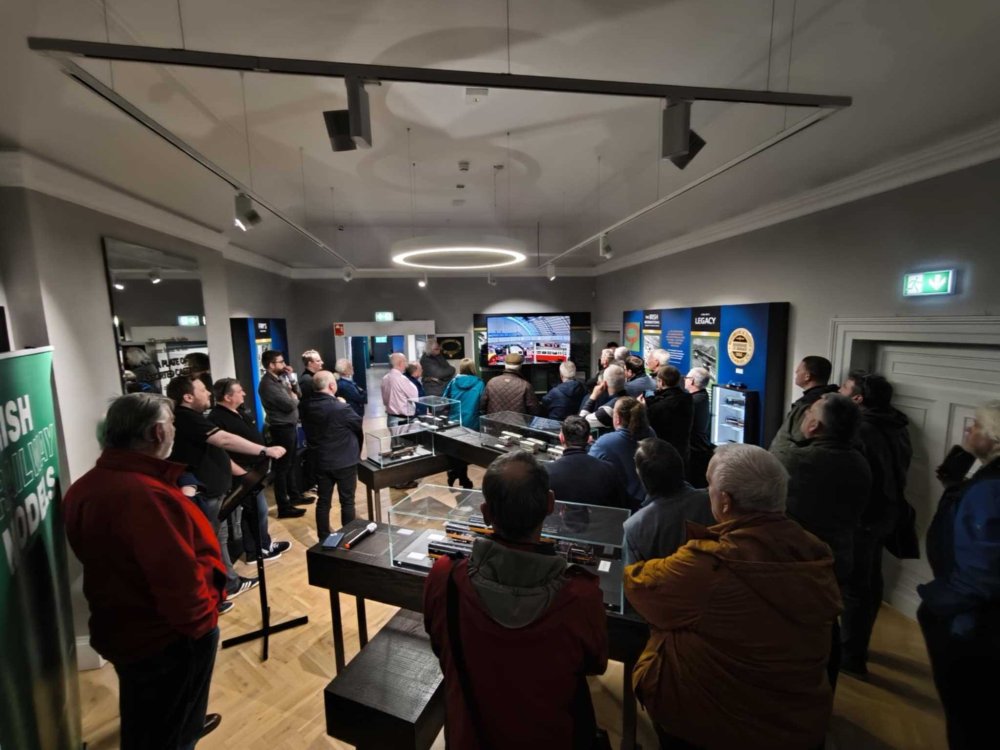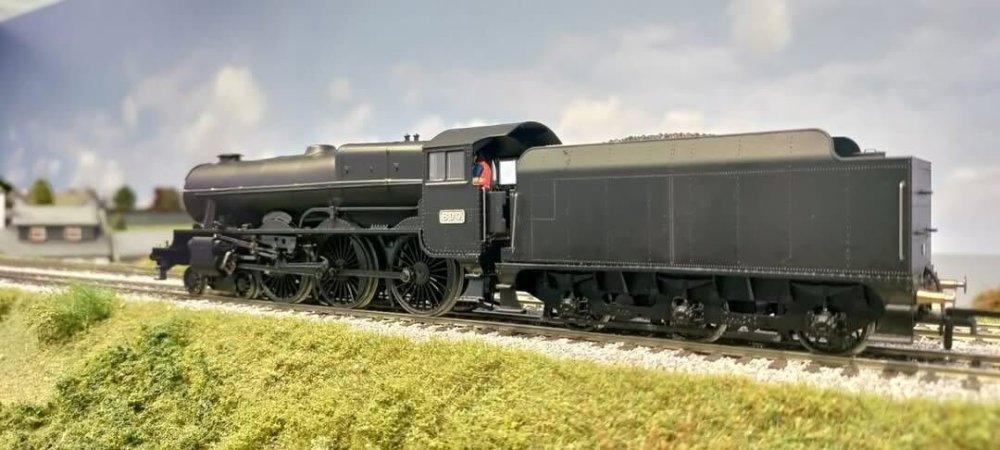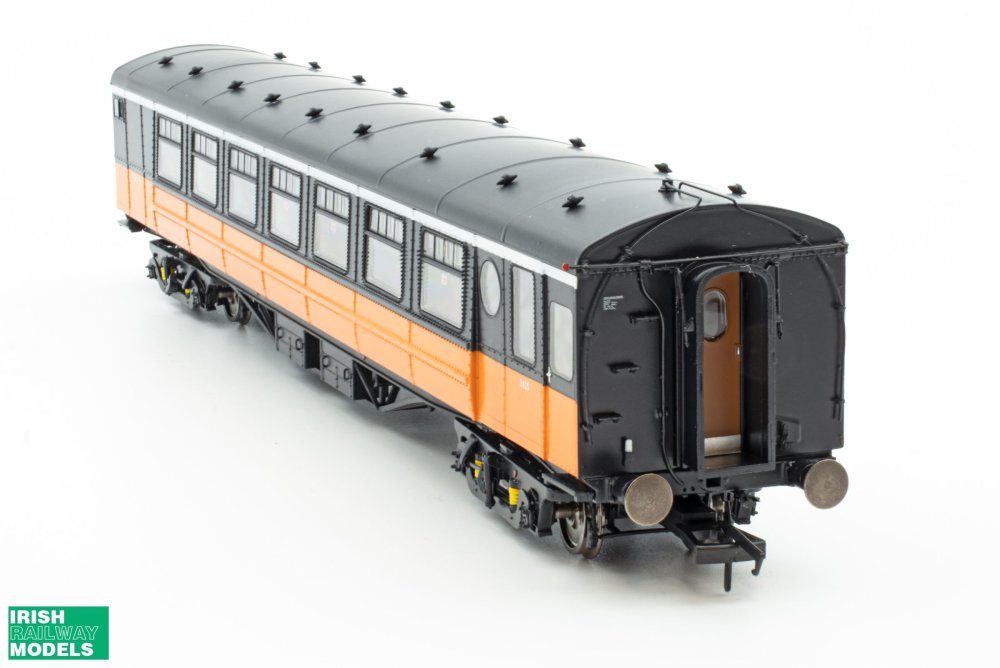-
Posts
7,088 -
Joined
-
Last visited
-
Days Won
250
Warbonnet last won the day on October 25
Warbonnet had the most liked content!
About Warbonnet
- Birthday 29/12/1983
Personal Information
-
Location
Dublin
Recent Profile Visitors
19,337 profile views
Warbonnet's Achievements
-
The use of diesel traction in the United Kingdom as a viable and effective form of locomotive power really began in the early 1930s, with the London Midland and Scottish (LMS) being at the vanguard of progress. Prototypes manufactured by Paxman, Drewry, Hunslet, Hudswell-Clarke, Harland & Wolff, and Armstrong Whitworth were powered by Allen, MAN, McLaren, Brotherhood, Paxman, Mirrlees, and Armstrong-Sulzer engines, delivering between 150hp and 400hp. However, in 1934, a new manufacturer entered the arena with a design that was to set the standard for diesel shunting locomotives right up to the present day. In 1934, English Electric delivered Works No. 3816 to the LMS at Crewe South as LMS No. 7079. Designated as Class D3/6, the manufacture of this 0-6-0 diesel-electric shunter was subcontracted out to Hawthorn Leslie of Newcastle and was powered by the English Electric 350hp 6KT prime mover. It proved successful enough that a further ten examples were ordered, in the LMS number range 7069–7078 (albeit with a downgraded top speed of 22mph, against 7079’s 35mph). The word spread among the ‘Big Four’ and further similar examples were supplied to the Great Western Railway (GWR No. 2), the Southern Railway (SR Nos. 1–3), and the LNER (Nos. 8000–8003). The LMS continued to push ahead with its programme of diesel-electric shunter orders, especially so during the war years, with the design being slightly modified into a prototype that was to become the basis for the ubiquitous Class 08. One of the first priorities for the British Transport Commission, following Nationalisation of the United Kingdom’s railways in 1948, was to design and build a standard large shunting locomotive. With the former LMS fleet amounting to 106 examples of the English Electric 350hp type, much of the design was based on that locomotive, but there was also scope to include some of the best features from the remaining pre-Nationalisation types, as well as adding provision for other engine and generator manufacturers by including alternative engine mounting and equipment positions. The 1950 BTC plan for the standard shunter was based on a single cab locomotive 29’ 3” long, with an 0-6-0 wheelbase of 11’ 6”. With the Southern Region’s requirements in mind, and to enable better rail clearance, it was decided to increase the wheel diameter to 4’ 6” and the total weight was set at 49 tons, an axle loading of 16.33 tons. Tractive effort was 35,000 lbs, and the top speed was set at 20mph, with vacuum train braking and an air braking system for the locomotive deemed sufficient for traffic at the time. The first order for the new locomotive was placed during the Spring of 1950, with locomotive numbering set in the 13xxx series. The first of the new class, No. 13000, left BR’s Derby works on October 11, 1952, eventually heading to Tyseley as its home depot. 13000 was the first of what was to become a fleet of 1193 BR standard 0-6-0DE shunters, built over a 12-year period between 1950 and 1962 at BR’s Derby, Crewe, Darlington, Doncaster, and Horwich workshops. The ‘Gronks’, as they have become affectionately known, have since covered every part of the UK railway network, from Thurso to Holyhead, Felixstowe, Penzance, and Dover. There were three engine and generator pairing variations to the ‘standard’ English Electric combination during the production phase. The first of these paired a Blackstone engine with British Thompson Houston (BTH) electrics, and this applied to the batch built at Darlington between February and October 1955, covering Nos. 13137–13166. The second (and most successful of the test variants), combined a Blackstone engine with GEC electrics, and this was fitted to Nos. 13137–13157, D3439–D3453, D3473–D3502, D3612–D3651, and D4049–D4094 built between 1955 and 1962 at Darlington and Doncaster. The final combination, covering Nos. 13117 to 13126, was built at Derby between June and September 1955 and paired a Crossley engine with Crompton-Parkinson electrics (although 13125 and 13126 were delayed by two years, being built in June 1957). In addition to these variations, the Southern Region requested a version with revised gearing to enable a higher top speed, and these 25 ‘souped up’ locomotives were later to become the Class 09 locomotives. The last locomotive to roll off the production line was D4192, built at Darlington in August 1962, and it emerged with a very different look to that carried by 13000. In terms of numbering, the 13xxx series was carried by 363 vehicles, up until the Derby built batch of June 1957 that commenced with D3357. The majority of the 13xxx series carried a livery of plain British Railways Black, with red buffer beams, white lettering, and the early BR emblem until June 1956. From this point onwards, locomotives were ex-works in plain British Railways Green with the later crest being carried, although 13298 to 13328 from Darlington works during 1956 appear to have left the works in the older plain black livery. Visibility of shunting locomotives in yards was an increasing concern for the BTC, and the first experiments in testing a form of high-visibility front and rear ends were applied to the 13xxx series, with white and black horizontal bands first applied to 13297 in February 1957 as a test, followed by the application of a half wasp striped end to D3682 and D3683 in August 1958. Following the success of the experiment, full wasp stripe/yellow ends began to appear during 1959, and by 1962 the new look was gradually adopted across the fleet, along with white handrails and electrification flashes. By mid-1967, repaints into the new BR Rail Blue were being carried out with locomotives being grouped under the pre-TOPS numeric classification system that created the 08 Class for the majority of the production run, with the exceptions being the creation of the 09 Class for the uprated Southern Region locomotives and the Blackstone/GEC variants being classified as Class 10. By 1974, most of the fleet carried the full five-digit TOPS numbering, although the Class 10s were withdrawn before they could carry TOPS numbers. From the 1970s onwards, as air-braked trains became the normal, rather than the exception, those surviving members of the 08 Fleet were modified for dual braking. This coincided with a major refurbishment program that covered internal, external, and cab modifications, as well as the later application of high-intensity lighting and the eventual removal of vacuum braking equipment. Modifications even extended into the 1990s, with a major refurbishment plan to upgrade the fleet to Class 09 specification but which, in the end, was only applied to 12 locomotives, creating the 09/1 and 09/2 Classes. The need for dedicated shunting locomotives declined through the mid-to-late 1980s and into the 1990s, as freight yards were gradually closed and freight locomotives took over terminal shunting duties. BR ownership merged into shadow, then full privatisation, and by 1996 less than half the original fleet survived, with just 500 ‘Gronks’ left in traffic. Since then, the numbers have declined even further, with just 223 Class 08s, 22 Class 09s, and four Class 10s left in traffic, either in service, stored, or in Preservation. There is still a glimmer of tradition among those survivors of the Class; areas where the venerable ‘Gronk’ is still performing the tasks for which it was designed, nearly 75 years on from 13000 appearing in traffic, and nowhere is this more apparent than under the stewardship of the Freightliner Group, who still retain a fleet of eight Class 08s for depot and terminal shunting. But it is not just in the traditional areas where the Class 08 excels; the design, created with flexibility from the drawing board by English Electric, is now being used to create low-cost freight locomotives that can operate into the future, converted to be powered by green technologies such as Positive Traction’s Class 08e battery-powered conversion of 08308, which has shown that even the oldest of dogs can still learn new tricks. That core flexibility of design has been utilised before though, with two major variants being produced to suit very specific tasks within the United Kingdom’s railway network. In early 1965, six of the Darlington built locomotives; D3697, D3698, D4187, D4188, D4189, and D4190 were converted into three ‘Master and Slave’ Class 13 locomotives to serve the specific traffic requirements at Tinsley Marshalling Yards that required wagons to be shunted over ‘The Hump’. The three new locomotives were numbered as D4500, D4501, and D4502 and they were delivered to the yard in July 1965, the only location in which they worked. Renumbered as 13001/2/3 under TOPS, the first of the units to be withdrawn from traffic was 13002 in June 1981, and the last was 13003 in January 1985. In Wales, British Rail were required to maintain a fleet of reduced height locomotives to operate over the Burry Port & Gwendraeth Valley (BP&GV) line, for operations between Llanelli and Cwm Maur. However, when the existing fleet of Class 03s were at the end of their operational life, it was decided to replace them with specially converted Class 08s. Originally, 08203, 08259, and 08592 were converted to Class 08/9 and renumbered and renamed as 08991 Kidwelly, 08992 Gwendraeth, and 08993 Ashburnham respectively, the conversions being carried out in January 1986 at Landore Depot. The conversion required the lowering of both the cab and the bonnet of the locomotives, with the cab roof being lowered and re-profiled to a much flatter, angular curve, whilst the bonnet was lowered by removing the bottom section. When 08991 and 08992 were withdrawn, a further two 08s; 08462 and 08687, were converted and renumbered as 08994 and 08995, and the names Kidwelly and Gwendraeth transferred over to the new locomotives. Initially appearing in BR Rail Blue, both with and without the white arrows, they passed through the sectorisation period of BR Railfreight and, once the BP&GV closed in 1996, into the West Wales general shunting fleet. Upon Privatisation, the three locomotives were absorbed into the ownership of EWS and allocated to the common user pool. Fortunately, for us at least, 08993 managed to evade the cutter’s torch and is currently preserved at the Keighley & Worth Valley Railway. With such a fleet of Class 08s, 09s, and 10s still surviving in service and preservation, we were spoilt for choice when it came to surveying examples of the locomotives, and this has been carried out around the country: from County Durham, North Yorkshire, and Derbyshire, to Kent, East Sussex, Hampshire, Wiltshire, and beyond. However, we must single out the help afforded to us by the Freightliner Group, who arranged for us to spend the day following operations at Southampton Terminal and to experience the ‘Gronk’ in its natural environment. Thanks to Freightliner, and all the other Heritage railways and charter companies, we look forward to bringing the modeller a variety of liveries and variations in the years ahead. Pre-Order Your AccuraGronk Here! View the full article
-
We've heard the cries, felt the anticipation, and now, the time has come. We're incredibly proud to announce our latest venture into the heart of British Rail diesel locomotives: the legendary Class 08, Class 10, and the unique, reduced-height Class 08/9 diesel shunting locomotives in 00 gauge! Welcome to "Accuragronk"! "Why an 08?" we hear you say... Well, since we begun our journey into the world of British outline model railway production, it's been one of our most requested locomotives at shows and online. Every range should have an 08 in it, and, as you will see below, we will do our own take on it! Watch! We reveal our 08 family and look at the real locos! We'll be bringing interesting variants never done before in ready-to-run models, alongside the more familiar members of the 350hp diesel shunter family. We will be adding in our blend of technology under the hood including lights, stay alive, sound suites and of course, our excellent value for money too! Let's see what we've got in store for you... The Shunter with a Twist: The Class 08/9 Story While the standard 'Gronk' is a railway icon, there's a fascinating chapter of its history rooted in Wales that we simply had to capture. On the Burry Port & Gwendraeth Valley (BP&GV) line, connecting Llanelli and Cwm Maur, British Rail was required to maintain a fleet of low-profile locomotives due to height restrictions. When the existing Class 03 shunters reached the end of the line, a special solution was engineered: the conversion of standard Class 08s into the characterful Class 08/9. The conversion, carried out in January 1986 at Landore Depot, was extensive: The cab roof was lowered and reprofiled to a much flatter, angular curve. The bonnet was dramatically lowered by removing the bottom section. The Cutdown Fleet Initially, three locomotives were converted and renumbered as Class 08/9s: Original Number New Number Name 08203 08991 Kidwelly 08259 08992 Gwendraeth 08592 08993 Ashburnham When 08991 and 08992 were withdrawn, a further two 08s (08462 and 08687) were converted, renumbered 08994 and 08995, and the names Kidwelly and Gwendraeth were transferred. These unique machines initially sported BR Rail Blue and survived sectorisation into BR Railfreight. They continued their work until the BP&GV closure in 1996, eventually being absorbed into EWS ownership. Under EWS they escaped the Welsh valleys and could be seen around the country, from locations like Doncaster to Westbury. They are also just funky, and as our sample shows, looks great in model form too. From Cut Downs To Perfect 10s... Do we just stop at the oddness that is the 08/9, or do we go further? Well, the "Accurascale Way" dictates that we fill the gaps, and with our Gronk family we will be doing just that in this run and beyond. An oft forgotten chapter in the BR shunter story is the Class 10, featuring a Blackstone power unit and GEC electrical gear. A total of 146 Class 10s were built before being deemed "Non Standard" in BRs traction programme, so they were withdrawn earlier in their careers. Finding use in industrial service post BR, 4 survive today and our model will be the first to capture the rather loud and unique thrash of these diminutive powerhouses in a ready-to-run model. Surveying the Shunters: Thanks to Our Partners With such a resilient fleet of Class 08s, 09s, and 10s still surviving in service and preservation, we were spoilt for choice when it came to gathering the necessary data. Our comprehensive survey work has taken us across the country—from County Durham and North Yorkshire to Derbyshire, and all the way to Kent, East Sussex, Hampshire, and Wiltshire. A special thank you must go to the Freightliner Group, who afforded us invaluable access to follow operations at Southampton Terminal. This experience allowed us to witness the 'Gronk' in its natural environment, ensuring every detail of its operation is faithfully recreated. Thanks to Freightliner and all the heritage lines, we look forward to bringing you a huge variety of liveries and variations! The Accurascale Feature List: Power, Detail, and Precision Our new 08 family isn't just about accuracy; it's engineered for superb shunting performance and packed with latest features that we have become renowned for. The Chassis & Running Gear Die-cast metal chassis and underframe for maximum weight and tractive effort. Operating over a minimum radius of 2nd radius set-track. Wheels profiled to RP25-110 standard, set into brass bearings. High quality, large diameter coreless motor paired with a helical gearbox. Extreme slow speed running capability. Gearing arranged to achieve realistic shunting speeds with smooth power delivery. All-wheel pickup for reliable operation. Detail & Variation ABS plastic body and cab with separate metal/wire detailing components. Era and version specific tooling, covering differing cab types, doors, buffer beams, couplings, and more. One-piece cab unit with poseable opening doors and a sliding roof hatch (where applicable). DCC, Sound & Lighting DCC ready with a 21-pin decoder interface accessible via a magnetic, removable upper engine compartment section. Fitted with a PowerPack/Stay-Alive capacitor for uninterrupted running—a must for shunters! Designed around the LokSound 5 DCC/MM/SX/M4 ESU Decoder. Supplied DCC Sound Ready, permanently fitted with twin ‘sugar cube’ speakers. Full sound suite with different engine type options. Fully directional fibre optic and LED lighting, with a full range of light options for marker lights, high-intensity lights, and flashing beacons. Separate cab lighting configurations. Two 2-pin accessory sockets to enable the use of DCC auto-couplers (available separately). Whether you’re a fan of the standard 'Gronk' in a modern freight yard, or the unique low-profile operation of the BP&GV, our new model will bring this iconic shunter to life on your layout. Prices, Delivery And Ordering Info So, you have had your first look at the Accuragronk range, and you are wondering "How much?" and "When?" Well, in keeping with our mantra of "realistic models at realistic prices", our shunters will be priced at £159.95 DC/DCC Ready variants and £249.95 DCC Sound Fitted with our suite of ESU Loksound 5, twin sugarcube speakers, stay alive powerbank, full lighting suite including cab and desk lights and configurations depending on era, and easy access hatch through the roof of the model. Delivery will be in Q1 2027. With a vast range to get through, our first run is pretty extensive so we can ensure there is something for everyone as much as possible. You can browse the range in the link below, and place your pre-order with no money down, or indeed spread the payments with our flexible terms at no extra cost, and avail of 3% cash back in loyalty points and free UK postage and packaging below! Browse The Range And Pre-Order Your Accuragronk Here! View the full article
-
Recently, we received the first sample of our highly anticipated Electrostar project — a model we’re developing in conjunction with our friends at Rails of Sheffield. This early, unpowered sample has been sent for us to inspect the fidelity of the moulds and to begin our feedback process, allowing us to accelerate the model into the decoration stages. Well, we were certainly taken aback when we saw it. We know self-praise is no praise, but wow — it’s a bit of a stunner! As with any early sample, there are a few areas that will need some fettling before moving forward. The kinematic couplings, for example, will require a little refinement. Our development team will also be revisiting the roof access and fixings, as they’re not entirely satisfied with the magnetic fittings and roof removal — particularly on the PTSOL. These areas will be adjusted to ensure a more secure and reliable fit. Another element under review is the mechanism that enables the fitting of destination screens. The concept works, but it needs further evaluation to see how it impacts other areas of the design before it’s finalised. On a more positive note, the underframes are looking excellent, with plenty of fine detail and an accurate shape — especially around the cab. The overall weight, centre of gravity, and balance are spot on, and the integration of the mechanics — including the motor and pantograph — has turned out very nicely indeed. We expect a fully powered version to arrive shortly, allowing us to begin performance evaluation and electronics testing. This next phase will bring a whole new level of interactivity and fidelity not yet seen on any UK-outline multiple unit to date. If everything goes according to plan, we hope to show you decorated samples around Easter 2026, and at this stage, our delivery date remains unchanged. All in all, it’s a very encouraging first step for the Electrostar — a few tweaks still to make, but plenty to be happy with as the project moves closer to production. Look out for videos taking a closer look and offering more in-depth insights from both Rails of Sheffield and ourselves next week! Fancy one? Place your pre-order (with your reservation fee) through Rails or directly via the link below. Pre-Order Your Electrostar Direct Here! View the full article
-
We wanted to give you a quick update on the shipment for our latest Class 66 run, as they near the end of their journey from the far east. Well, that's what we thought! But, it's a great way to demonstrate why things can take a little longer than expected, and show how we can get caught out when giving you an update with a decision that is completely beyond our control. Originally, the vessel carrying our stock was meant to stop at Felixstowe first, and we’d booked everything based on that plan. But over the weekend, the shipping line made another change, and now the UK won’t be the first port of call after all! This was completely out of the blue to us, and instead the ship has decided to head to Rotterdam first, before calling back to the UK. We were informed of this decision yesterday. We are unsure why this has occurred, but unfortunately there is nothing we can do. Come back!!! While we don’t have the full details, it’s likely that either: They couldn’t get the original slot in Felixstowe, The slot was used for a different ship from the same shipping line, or The cargo layout made it tricky to unload the UK containers before those for other European ports. Because of this, the ship’s ETA into Felixstowe has moved to 22nd November — so around a three-week delay. Sadly this is just the reality of shipping, and how our best laid plans and timelines can get changed on a whim and beyond our control. We know this isn’t ideal, and we really appreciate your patience while we wait for the ship to make its way to the UK. We’re keeping a close eye on things and will update you again if anything changes. Thanks for sticking with us — the wait will be worth it! Pre-Order Your Class 66 Here! View the full article
- 1 reply
-
- 1
-

-
There is always a fascination with the railway operations of the far-flung corners of the UK among modellers. It really grabs our fascination too. Sometimes it’s the wilds of the Scottish Highlands, or perhaps deep in the Welsh valleys. Perhaps it’s a shared intrigue among our Celtic cousins. Another area with a Celtic connection is, of course, Cornwall. The China Clay operations of Kernow are particularly fascinating, and in recent years we have moved to serve the passionate fans of these operations with our lovely CDA wagons — and now, of course, their predecessors: the wonderful Clayhoods! Announced at the beginning of the year, our Clayhoods are now on the last leg of their journey by sea and will land in our warehouse at the end of this month. We thought it only fair to please our Cornish fans even more by sharing images of the production samples below! As you can see from the multi-wagon shot of the hooded wagons, we used the official British Standard colour code for the wagon tarps and then introduced varying degrees of fade to give the wagons that colourful, realistic look when running in a long block train — and, of course, a little encouragement for you to get the modelling powders out! These wagons have been immensely popular with pre-orders, but with so much love from our Celtic cousins in Kernow, that’s hardly surprising! We still have some of the Clayhoods and Clayfits available to order via the link below — and you can take advantage of our famous mix of free postage and packaging, rake bundle deals, and loyalty bonus points. Make sure you check with your local stockist too for availability! Pre-Order Your Clayhoods Here! View the full article
-
- 1
-

-
As you may know, we work very closely with our friends at ESU to bring you the latest DCC technology in your digital sound locomotives. All our DCC sound engines use ESU Loksound 5, and we offer suitably programmed LokPilot decoders to all you to enjoy your Accurascale model to its full potential. Therefore, it makes complete sense to begin offering the complete suite of DCC programming technology and controllers, as well as other helpful accessories such as their locomotive cradle to allow you to add a decoder and service your locomotive with ease. We will grow our range of ESU offerings in time and in line with demand, but for now you can browse what we have in stock, right now, ready to ship to your door via the link below! And yes, you can of course use your Accurascale loyalty points against your purchase, and accumulate them with each ESU purchase too! From lokprogrammers to the full fat ESU ECOS DCC control system, you can pick up the very best quality digital equipment via the link below. Browse the ESU DCC Range Here! View the full article
- 1 reply
-
- 7
-

-
ICR TESTING UNDERWAY! Thank you to everyone who came to visit us at the South Dublin Model Railway Club exhibition last weekend and saw our latest ICR sample. As we stated in our recent update and at the show, the real testing now begins and we began with acceptance runs on the wonderful “Barrow Street” layout which you can see here. Doesn’t it look right at home as he heads for the sunny south east? Lots more testing to do, but early signs are positive. We have a second unit joining us in the coming weeks and once that is assessed too we will be able to give a firm delivery update! Watch this space… Watch here: https://www.facebook.com/share/v/1BxCGAnhYb/?mibextid=wwXIfr Pre-Order here; https://www.accurascale.com/en-ie/collections/railcar-class-22000-icr-1
- 16 replies
-
- 10
-

-
When the mighty Bredin Class B1a 800 Maeḋḃ first emerged from Inchicore Works in April 1939, few could have predicted the visual legacy it would leave behind. At first glance, its overall grey livery seemed nothing out of the ordinary—after all, both the Great Southern & Western Railway (GSWR) and its successor, the Great Southern Railway (GSR), had long favoured an unlined mid-grey finish for their locomotives. Yet Maeḋḃ was no ordinary machine. As the new flagship 4-6-0 locomotive, representing the pinnacle of Irish steam design, Inchicore gave 800 the full Works’ Photographic Grey treatment—complete with delicate lining and highlighting. When the locomotive rolled out for its press photographs in that elegant, monochrome splendour, it immediately set a new aesthetic benchmark. This was not simply a prototype in grey; it was a vision of Irish locomotive pride. By the time of the official demonstration run on July 17, 1939, the photographic grey had given way to the newly adopted GSR green livery—a scheme that would go on to define not only Maeḋḃ and her two sisters but also their later service with Córas Iompair Éireann (CIÉ). Still, the striking appearance of the Works’ Photographic Grey remains iconic, representing the transition from industrial utility to refined presentation. Our new presentation model seeks to capture that original look as faithfully as possible. Every contour, every detail of the Photographic Grey has been carefully recreated. In keeping with the exclusivity and museum-grade craftsmanship of this extremely exclusive nature, the model includes alternative etched nameplates, cab plates, and tender plates for the unbuilt 803 and 804, which were rumoured to have carried the names Aífe (Aoife), Derdriu (Deirdre), and Gráinne. These names appear in the GSR tender lists, alongside two ‘spare’ numbers—83 and 84—suggesting that, at least on paper, the continuation of the class was once a real possibility. For enthusiasts of Irish railway heritage, we’ve also included separate headboards for the Enterprise service, paying tribute to one of the most distinguished duties ever undertaken by these locomotives. Each model will be presented in a hand-crafted wooden presentation box, befitting the prestige and historical importance of Maeḋḃ—the queen of Irish steam, remembered forever in that singular shade of grey. Each model will come with a exclusive edition certificate and will only be available via the Accurascale IRM website. Due to the exclusive nature and added features of this model, it is priced at £329.95/€367.95 for DC/DCC Ready and £429.95/€484.95 DCC sound fitted. Delivery will be with the rest of the 800 models which is on course for Q3 2026. Pre-order below! Pre-Order Your Grey GSR 800 Here! View the full article
- 11 replies
-
- 11
-

-

-
Recently we promised and delivered an in-depth update on our Park Royal coaches, which are happily now motoring through the production process after a much longer than ideal development process. We promised the same on the ICR too at that time. As you are aware, it's been the long suffering and problem child project for us here at Accurascale IRM. We set a deadline of providing an update ahead of the annual Dublin model railway exhibition which takes place this weekend and we've been cutting it fine. However, the latest development model landed with us yesterday (Thursday)! So, the good news is we have it for the show. The bad news is that we've yet to test it properly, let alone take photographs of it for this update! However, more good news! We couldn't resist putting a sound decoder inside with a first draft of the sound project, so we have taken a short video which you will be able to see below! The model on display represents the latest step in what has been a long journey of development and refinement. Each version has brought us closer to a more seamless and realistic operation — and this latest one takes a major leap forward. Smarter Couplings, Smarter Control One of the most notable (and technically challenging) upgrades is the redesigned coupling system. These new couplings allow a single decoder to control the entire train, a feat that required a complete rethink of the system’s internal circuitry, and has never been done on a unit of this complexity anywhere before. After the factory producing the model felt that it could not be done with our long list of functionality demands off one decoder, we approached the foremost experts in all things DCC, ESU, to help us with the design. ESU themselves have described it as "the most complex project" they have ever worked on, and development took over 12 months to complete between designing, testing and troubleshooting the circuitry for the single decoder design. This was after almost two years of the factory attempting to make it work using their own electrical engineers. This new sample is the first ICR to carry this newly designed ESU circuitry for testing. This change brings two huge benefits: Customer cost savings – Previously, achieving full sound across the train meant purchasing multiple LokSound decoders. Now, a single decoder does it all. Otherwise the RRP would be almost double what it currently is. Hands-free operation – The need for a control wand has been completely removed, making the experience far more intuitive and immersive, just using your DCC controller for full functionality. Digital Communication at the Core With the huge number of lighting functions involved — interior lights, cab lights, dual-colour door lock lights, and more — we needed a smarter way to handle communication. The solution was a digital communication bus, transferring all the output data from the decoder through an integrated circuit (IC) and down just a few wires instead of a nest of complexity! This innovation allows every car in the train to “talk” to the central decoder seamlessly, keeping things tidy and efficient under the hood. This allows the technology to be more robust and reliable. A Peek Behind the Roof For those who love to see what’s going on beneath the surface, we’ll be highlighting the new couplings, providing views with the roof removed, and showcasing the intricately designed ESU PCB — the real brain behind this model’s intelligent operation. View the sample and hear the first draft of the sound file below! Please remember this is a first draft, on a test mule, and both will receive improvements before production. The ICR also offers additional complexity, needing to work in 3, 4 and 6 car formations, adding further layers of engineering complexity to the model from an electrical point of view. So, where does this leave the project? Frankly, we will not know until testing of this sample by us is complete. If it works as it should, then they will go straight into production and delivery will be mid next 2026. If not, it may take longer. It's not the news any of us wanted, but we would rather be honest with you. However, on even early testing as above, the signs are very positive that our ICR functions as it should, so we are getting confident that it's coming together and it will be with us sooner, rather than later. Our plan now is to test this after the Dublin show, and then we will film the model in a more thorough update, showing all the features and how it all works. This will have a more accurate timeline on delivery. We expect that video to go live before the end of November, so watch out for it! We once again thank you for your patience and understanding, and are happy to bring you positive news on our most ambitious model by far to date. With speakers in every car, a serious array of lighting configurations, a wealth of separately applied interior and exterior detail, and everything easily controllable on your DCC controller, our ICR promises to be a show stopping model and the pride of any fleet. We look forward to showing you more this weekend and in our forthcoming video in a couple of weeks. Fancy one? Pre-order yours today below: Pre-Order Your ICR Here! View the full article
- 16 replies
-
- 15
-

-

-
Hi folks, First of the weekends announcements is here! Cheers! Fran
-
Since we first announced our new NIR Hunslet locomotives, the most frequent question we’ve been asked is: “Will you do your Mark 2 coaches in original livery to go with the maroon ones?” Our answer has always been yes—and true to our word, here they are, in their classic maroon and blue finery. But we haven’t forgotten about our blue Hunslets either. Although we’ve produced them before, we’re bringing back the grey and blue livery too! History Built at Litchurch Lane, Derby, in 1970, eight examples were constructed for Northern Ireland Railways for its new Enterprise service between Belfast and Dublin. This landmark service featured a range of bespoke vehicles that were quite unlike anything then in operation in Ireland—or indeed on British Rail—despite being a derivative of a BR design. The eight Mk.2b coaches acquired by the newly formed Northern Ireland Railways (NIR) included several new types: one First Open (FO), two Brake Driving Trailer Seconds (BDTS), and a single Grill-Bar—the latter being the only purpose-built Mk.2 catering vehicle. The other four vehicles were designated SOs, although they were almost indistinguishable from BR TSOs. Delivered in NIR’s blue and maroon scheme and fitted with B4 bogies set to the Irish 5ft 3in track gauge, they initially worked in push-pull formation on the Belfast–Dublin Enterprise express service, powered by one of the three Hunslet DL Class 101 locomotives—or by pairs of them, either top-and-tailed or double-headed during the summer months. In 1978, the fleet—which now included five Mk.2c coaches purchased in 1972—was refurbished and repainted in a new silver-grey and blue livery. However, the increasingly unreliable Hunslets—despite sharing an engine and many mechanical and electrical components with the BR Class 20s—were replaced in 1980 with General Motors 111 Class locomotives. The lack of electric train supply on the new motive power required the addition of a generator coach to each Enterprise formation. In 1980, NIR acquired five ex-BR Mk.2b BFKs for conversion, along with an additional ten secondhand Mk.2b coaches and three Mk.2cs. The use of driving trailers on the Enterprise ended with the introduction of the 111s, and the trains reverted to being hauled as conventional coaching stock. With this extra stock, it became increasingly common to see Enterprise trains away from their usual cross-border route. Formations of three to five coaches were regularly used on Portadown/Lisburn–Belfast–Bangor and Belfast–Derry/Londonderry services, typically with a single Hunslet operating in push-pull mode. By the mid-1980s, several ex-BR coaches were rebuilt as open coaches, while others were converted to strengthen 80 Class DEMU sets or replace bomb-damaged vehicles. The Model Our Mark 2 coaches have been meticulously researched and designed, based on surveys of numerous surviving vehicles across Britain and Northern Ireland. Using original works drawings and even partial 3D scans, we’ve ensured the characteristic tumblehome and shape of the ends are as accurate as possible. The research extended to the interiors, with particular attention paid to the iconic winged headrests—each a separate part—that are such a defining feature of first- and second-class seating in early Mk.2s. This new production run of maroon/blue and light grey/blue cars introduce new "Mk.2c" versions that were not included in the first run, taken from the 1972 batch for NIR and the secondhand BR coaches acquired in the early 1980s. Incredibly there are four different roof vent styles across the 12 new coaches, the original Mk.2b 'dome' plus the large 'G', intermediate sized 'GM' and the classic Roe-Vac that were also seen on British Rail's own Mk.2c. This variation has been faithfully replicated on the model. We also correctly replicate the unique to NIR Mk.2c roof without the hatch seen on the British Rail coaches. In our first run of NIR coaches, we depicted Grille Car No. 547 in its modified format. We have now tooled the original version (with the differing window arrangement on one side) to accurately portray these coaches in their original livery. We’ll also be offering No. 547 in grey and blue livery, in its unmodified form as it appeared before the changes made in the early 1980s. The NIR examples presented a particular challenge, with numerous unique variations, a wider track gauge, and additional underframe and roof details depending on the vehicle type. We even tooled an Irish-gauge B5 bogie—used only once—which was fitted to the generator end of the BGV coaches to accommodate the additional weight. The bogies for the NIR coaches are also bespoke compared to the BR versions. The prototypically wider frame has been faithfully represented, allowing for 21mm fine-scale conversion. Common Features: Highly-detailed OO Gauge / 1:76.2 Scale Models on 16.5mm track Extremely fine exterior rivet detail on roof and coach ends Separately-applied etched metal and high-fidelity plastic parts, including handrails, brake/steam heat pipes, ETH cabling and sockets, footsteps, dummy drophead knuckle coupler, and roof vents Prism Free Glazing Pre-painted/printed Western Region destination boards and holders plus water filler covers provided for customer to install Fully-detailed underframe with numerous separate parts, pipe runs and accurate differences between versions The most accurate B4 and B5 bogies ever produced, with provision for re-gauging to EM or P4 (Irish 21mm) gauges Blackened RP25.110 profile wheel-sets with 14.4mm back-to-back measurements, and 26mm over pinpoints Different buffers for retracted and non-retracted positions Accurate interiors with characteristic 'winged' headrests, separate metal interior handrails on the brake and corridor vehicles and fully-detailed guard's compartment Full lighting package, including magnet 'wand' controlled interior lighting with 'Stay-Alive' capacitor in all coaches and directional lighting with DC or DCC control (Driving Trailer only) Minimum Radius 438mm (2nd Radius Set-track) Correct height NEM standard coupling sockets with mini tension lock couplers and kinematic close-coupling Unlike our first run, we will be selling coaches individually instead of triple packs. This allows to build the rake as long as you like, or indeed bolster your existing grey and blue rake! Each coach is priced at £74.95/€89.95, with the DCC ready driving car priced at £84.95/€97.95 each, with 10% off when you buy two, three or four coaches, and 15% off when you buy 5 or more in one transaction. Delivery is Q4 2026, giving your new Hunslet locomotives the perfect train to haul. Available direct only via the Accurascale website, you can pre-order yours today via the link below. This is very likely the only run of NIR Hunslet locomotives and coaches we will ever do, so do not miss out. You have been warned! Pre-Order Your NIR Mark 2 Coaches Here! View the full article
- 33 replies
-
- 12
-

-

-

-
Hi everyone, As the village elders of this forum and the hobby may know, it's 10 years ago this very weekend since IRM first broke cover at the South Dublin Model Railway Show at Blackrock College. We were buoyed with a dream; to bring a detailed, accurate and Irish specific model railway wagon to market as good as any other Ready-to-Run manufacturer anywhere in the world could muster. We set out and dared to dream, with some banners and leaflets and a spot at the show very kindly provided to us at the last minute by @DartStation at the SDMRC Blackrock show. Soon our humble CIE ballast wagon was born, and with the support of many of you on this forum and beyond, IRM snowballed from a little acorn to a company with 20 full time employees today. We've come a long way, and that's thanks to your support and custom for our efforts. We've produced a multitude of wagons, coaches, locomotives and accessories in that 10 years, and there is more to come. Earlier this year, we said we would mark our 10 years with a very special announcement. We held a special evening at the Fry Model Railway in Malahide, where the first sample of our 800 class was unveiled. So, what else have we got planned to mark this milestone this weekend? Well, we have a new announcement on Thursday that will not be a surprise to many of you (and compliments our range quite well) at 11am, with samples available to view at the show this weekend. On Saturday morning as the doors open at the show, we will unveil another small new announcement, something very limited and very special indeed. Again, you will be able to see it in the flesh at the show. Dying to see our new Palvans, bubbles and unfitted H Vans? They will be there, along with decorated Hunslet locos, which are almost finished production at the factory. "But what about the 800s?" Well, if you come to the show you will see the first couple of decorated samples. They arrive on Thursday being specially completed for the show this weekend, so we wont have time to photograph them before the show to share online. Sorry. "Hold on, what about the Park Royals?" See the latest samples in the flesh as production motors on and is due to be stock in the new year. "Right, fine. But come on, what about these ICRs? It's taking forever." Yes, you have a point there. However, after much hard work behind the scenes, on the one project that techno wizards and lord of the DCC world ESU have said "is the most complex model we have ever worked on" a working sample will be on show too with a full update provided. It has more light shows than Las Vegas, and all off one decoder. It's rather special.... So, there will be lots to see and catch up on as we push on with providing the Irish outline model railway world with the latest and best models we can possibly produce, and are the envy of any market across the world. We can't wait to see you this weekend, please stop by and say hi. We won't be taking your money though, as we will no longer be retailing at shows. We will be there just to chat, answer your questions and shoot the breeze. Marks and Dave Bracken will have everything IRM you need on their stands if you have a few quid to spend. See you there!
- 20 replies
-
- 22
-

-

-

-
Hi folks, Nope, they're in production at the moment. We are sure we are correct on our roof radius and it checks out against our measurements. Granted you may have a point about the X bracing on those ends. People can see them in the flesh this weekend at the show and make their minds up themselves. Cheers! Fran
-
Hi folks, More news coming from Accurascale/IRM later this week ahead of the show (including updates and yes, new announcements!) but just to let you know we WILL NOT be selling models at the show, and are just purely there for display and to provide you with the latest updates. If you are looking to buy some IRM goodies, please check in with Marks Models and Dave Bracken. See you at the weekend, and look out for further news on the forum throughout the week ahead! Cheers! Fran
- 60 replies
-
- 13
-

-

.png.c363cdf5c3fb7955cd92a55eb6dbbae0.png)
